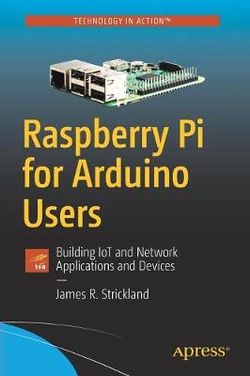Where the two platforms overlap the most is the GPIO system. You'll see that several projects use and explain the WiringPi system. This is is deliberately similar to the Arduino's 'Wiring' functionality, which is how sketches interact with GPIO pins. You'll learn the differences between the GPIO pins of the two devices, and how the Pi has some limitations on those pins that the Arduino does not. As a final project, in an effort to escape some of those limitations, you'll attach an AtMEGA 328P to the Raspberry Pi and configure it as a real, 8MHz Arduino with the Arduino IDE running on the Pi, and learn how to have the two platforms communicate, giving you the best of both worlds. What You'll Learn
- Establish security with Linux system administration
- Set up the Apache webserver
- Write CGI programs so other computers can connect to your Pi and pull data in from it.
- Use C/C++ from Arduino sketches to write programs for the Pi
The Arduino user who's been through all the tutorials and is comfortable writing sketches and connecting hardware to their Arduino.




Share This Book: